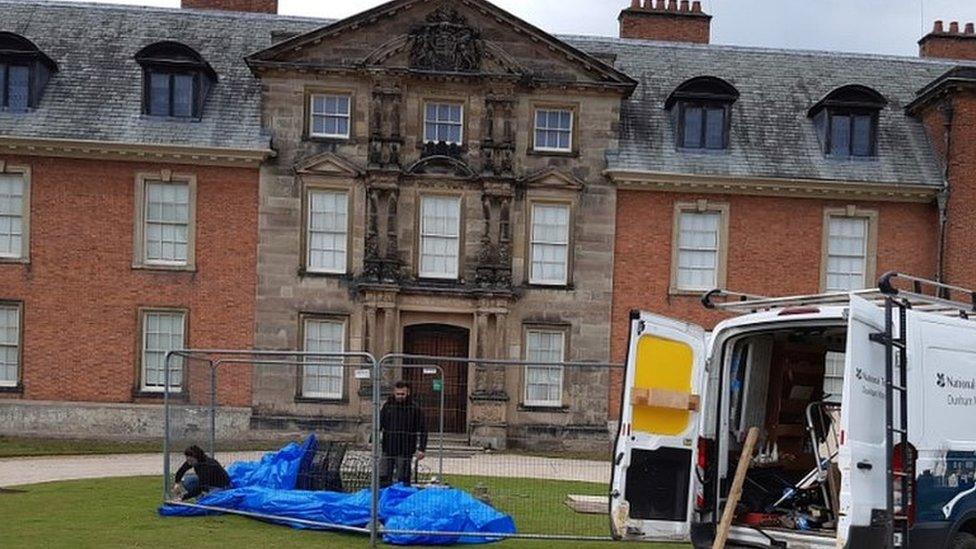The National Trust homes where colonial links are 'umbilical'
- Published
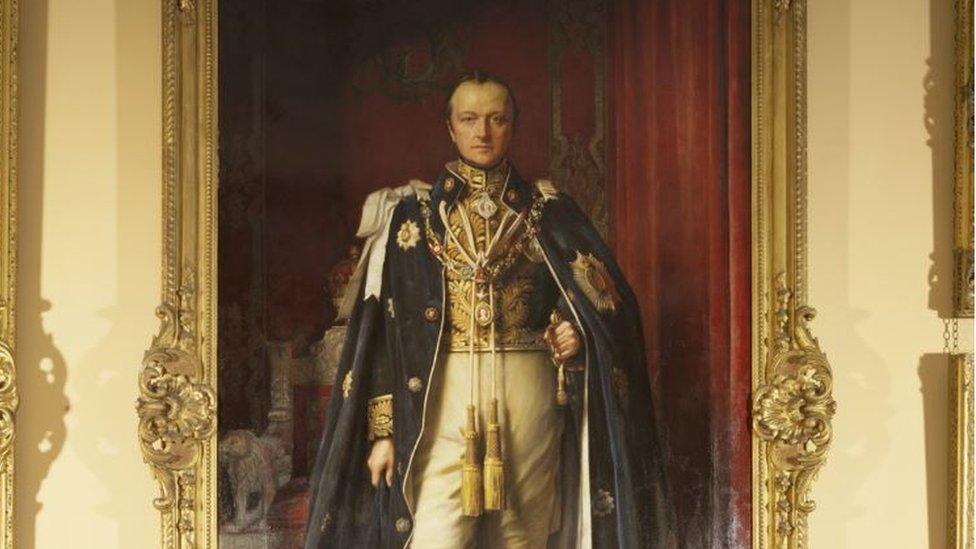
Kedleston Hall's former owner Lord Curzon served as Viceroy of India
A stroll around a country house is, for many, the ideal way to spend a Sunday afternoon. But the National Trust is calling on visitors to view its properties with fresh eyes, as the beneficiaries of a British Empire that reflects a murky past.
Prof Corinne Fowler "didn't anticipate the catalyst of Black Lives Matter" when she first pitched an idea to the National Trust, back in 2017, to organise a children-led project about its properties' colonial connections.
In Britain, the protests fuelled calls for statues honouring those with links to slavery and racism to be taken down, and one "degrading" statue of a black man outside the trust's Dunham Massey property in Greater Manchester was removed.
The trust recently found that up to a third of its 300 UK houses have links to colonialism. "I expected [the links] to be extensive but I didn't expect there to be that many: the connection was umbilical," said Prof Fowler.

Charlecote Park, Warwickshire
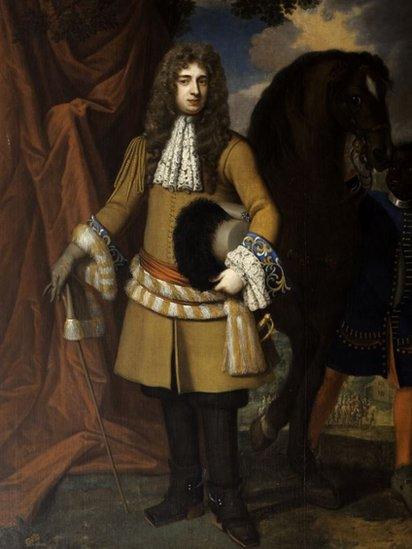
On the far right of the portrait is a boy in a metal slave collar, believed to be Will Archus
On display in Charlecote, a 16th Century house near Stratford-upon-Avon, is a painting from 1680 by Godfrey Kneller that shows Thomas Lucy - then Charlecote's owner - with a black servant.
"We believe it was his black page," said Prof Fowler, who teaches colonial studies at the University of Leicester. "The boy is shown wearing a metal slave collar. We don't know if this collar was real or symbolic."
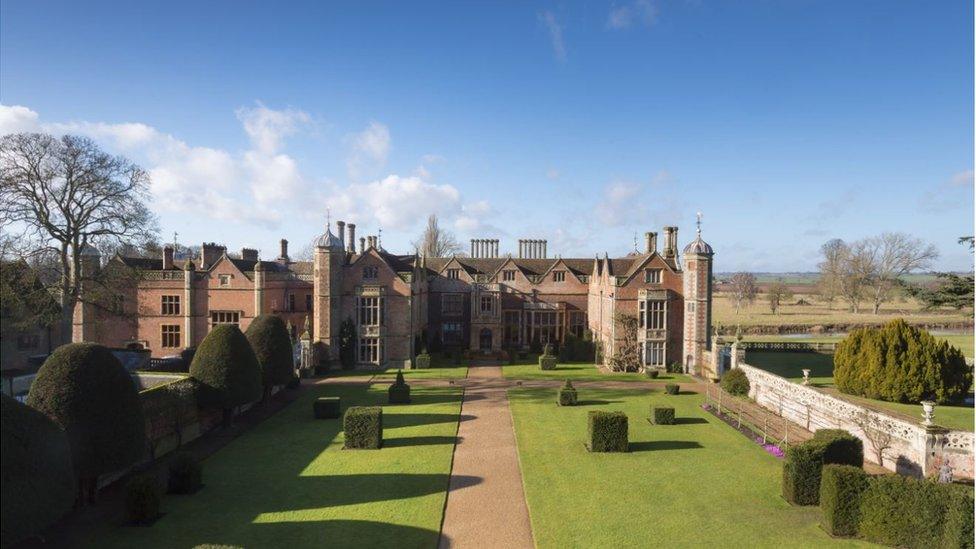
Charlecote was owned by the Lucy family
Prof Fowler said the painting was interesting because it opened up the history of a black presence in country houses in the 17th Century.
"It's probably earlier than a lot of people realised," she said. "We think the boy might be called Will Archus.
"We know there was a boy of that name there at that time, because we have researched the parish records, and a visitor to the house comments on how there was a boy serving hot chocolate at around that time.
"We don't know how long he lived for, or much else about his life, but he was baptised as an adult. He is right on the edge of the painting, in the shadows, and the painting is hung at Charlecote above a doorway in such a way that you can accidentally not see it."

Kedleston Hall, Derby
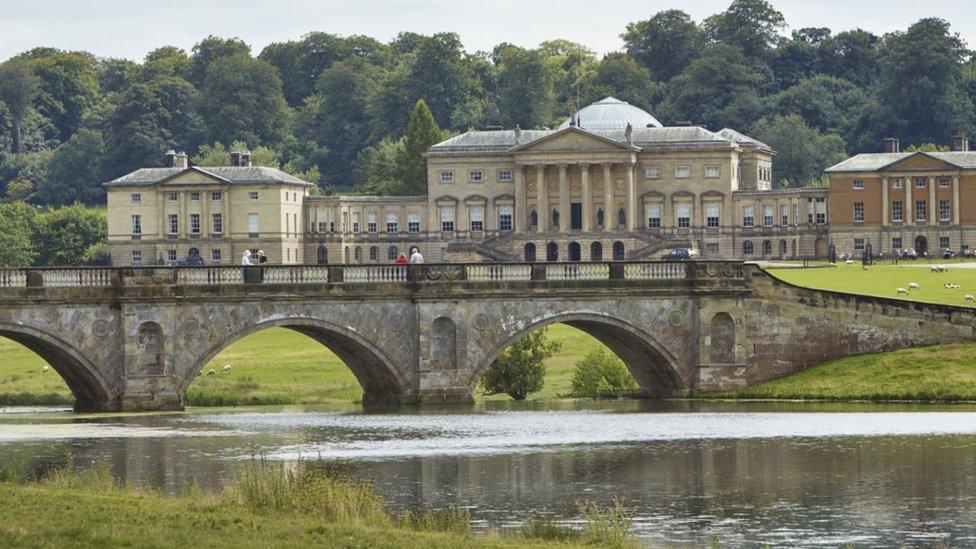
Kedleston is one of several impressive National Trust houses in Derbyshire
Set in grounds encompassing serpentine lakes, Kedleston's Robert Adam-designed stately home is one of the trust's many impressive Derbyshire properties.
Its collection includes artefacts from around the world, largely thanks to former owner Lord Curzon, who served as Viceroy of India between 1899 and 1905.
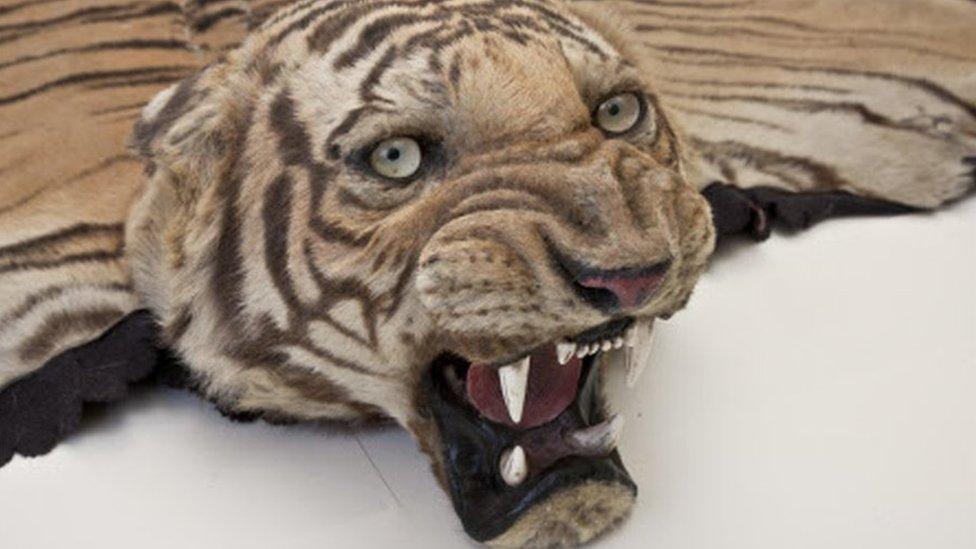
The house boasts many artefacts that were collected by Lord Curzon
"The house includes many artefacts from India and the Middle East from his travels," said Prof Fowler. "There's an ivory elephant, a tiger rug and some miniatures from Lucknow, a site of violence during colonial times."
She said there was nothing on the National Trust's labels - which were inherited from the V&A - to suggest Lucknow was a site of trauma during colonial times, external.
The V&A said the basis for the labels in Kedleston's Eastern Museum appeared to have been a 1907 catalogue of the collection from when it went on display while on loan in London.

The labels on the objects do not reflect the darker side of colonial history, says Prof Fowler
"The labels say things like, 'Native personage on elephant'," she said. "There are no references to the darker side of colonial history. Part of the legacy of colonialism that we have inherited is the interpretations of previous curators who have been immersed in that colonial mindset.
"We are now repositioning the country house as a global phenomenon that has relevance to the rest of the world and reflects connections with the rest of the world.
"It's a really important shift in our minds, because country houses are seen as epitomising Britishness."
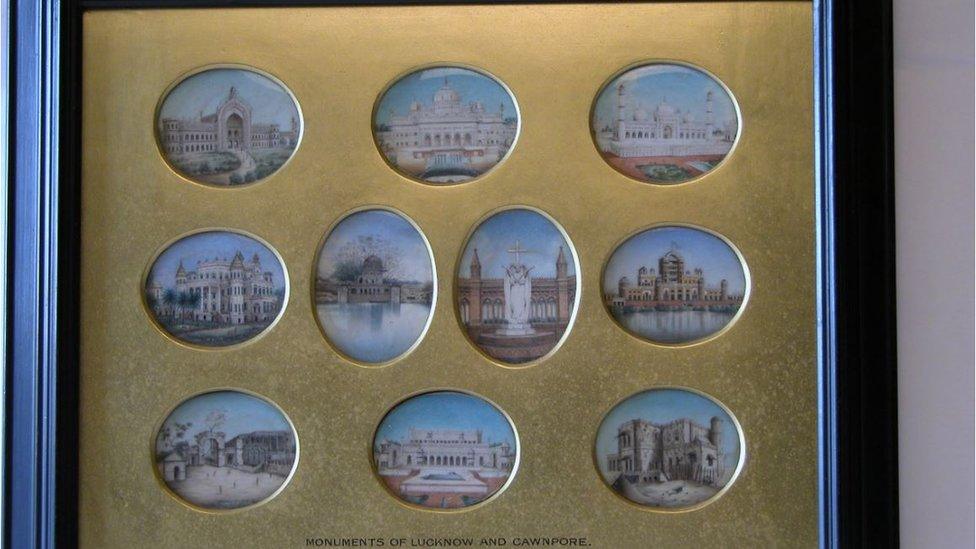
Nothing suggests Lucknow - depicted in these miniatures - was a site of trauma

Speke Hall, Liverpool
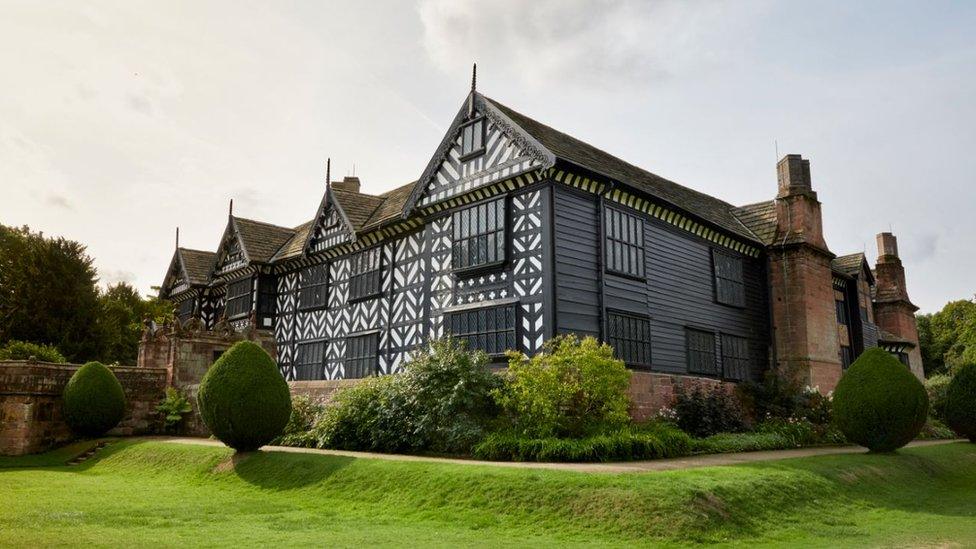
Speke Hall is a wattle-and-daub manor house
At first glance, Speke is merely a spectacular Tudor manor house in Liverpool.
But, said Prof Fowler, it is also "a great example of a really major slavery story which is not clear unless you know the background of the house".
Speke was owned by two families. One of them was the Norris family whose ranks included slave trader Richard Norris, who was central to improvement schemes at Liverpool's docks that ensured access for ever-larger ships.
"According to the historian Laurence Westgaph, ultimately Norris's actions were an important contribution to Liverpool's dominance of the slave trade by the 1740s," said Prof Fowler.
"The other owners were the Watt family. Richard Watt (1751-1803) started out as a hackney carriage driver who owned a slave ship, sold slaves to plantation owners and had a rum and sugar shipping company himself.
"The money his nephews inherited allowed for the restoration of the family hall, which is what we see today."

Calke Abbey, Derbyshire
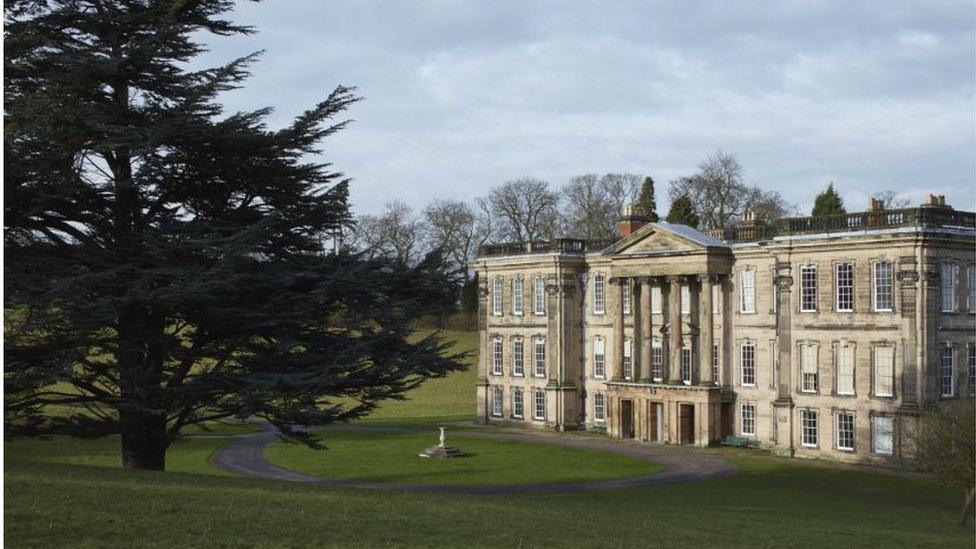
With its peeling paintwork, Calke Abbey has been deliberately maintained as a country house in decline
Calke is one of the trust's most intriguing properties.
With its peeling paintwork and overgrown courtyards, it has been deliberately maintained as a country house in decline, to tell the story of the waning of a style of living that once dominated the English countryside.
"Calke is the perfect example of a house which has direct connections to empire and shows how the country house was steeped in empire," said Prof Fowler.
"There are a lot of items from formerly colonised countries which are displayed in a typically colonial fashion.
"There's a case of a Tibetan skull cup, which was a sacred object, nuzzling up against a mosque tile. They are put there by earlier generations completely out of context.
"What we have is a decorative custom of display, with no information about where these objects come from or how they were used."
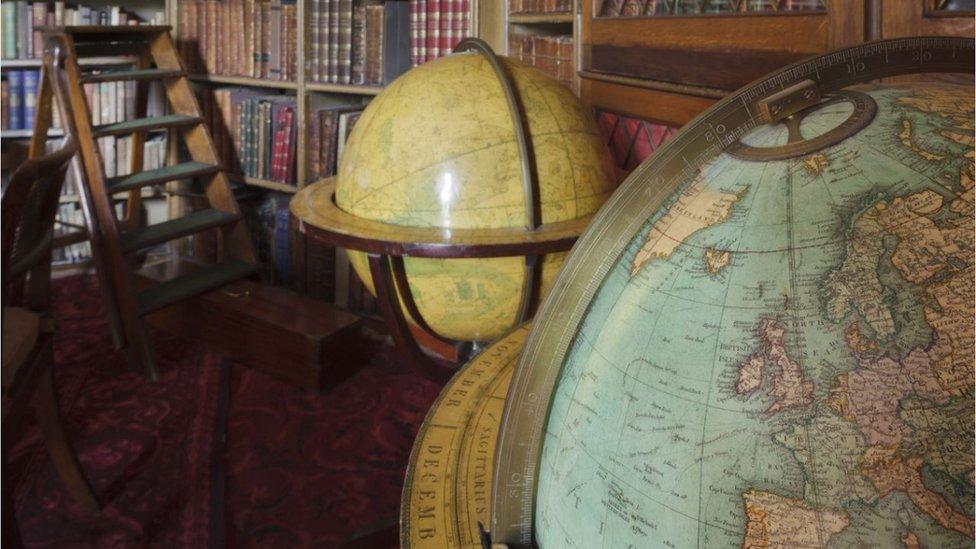
Calke contains globes showing the lines of the British Empire from 1870
The objects are likely to have come to Calke thanks to a mania at the time for collecting items from afar.
The Harpur family, which owned the property from 1622, had connections through marriage with Barbados plantation owners and an East India Company merchant, as well as an Egyptologist, according to Prof Fowler.
"One of the interesting objects at Calke is a globe, dating from 1870, which has red lines showing the farthest reaches of the British Empire at that time - but of course those red lines would creep even further around the globe as the century wore on."

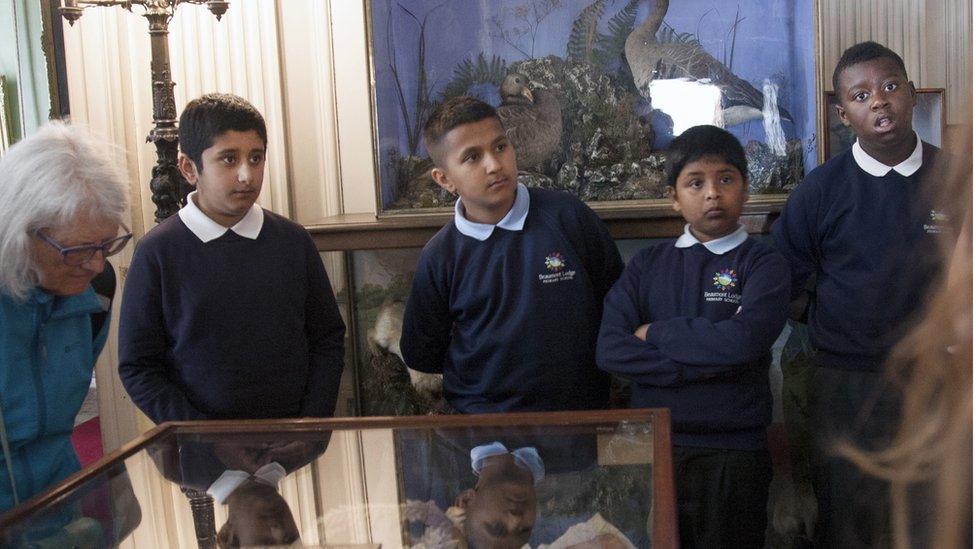
The children involved in the National Trust project helped curate exhibitions and gave guided tours
Other properties included in the project include:
Buckland Abbey, Devon
Dyrham Park, near Bath
Osterley Park, west London
Penrhyn Castle, Gwynedd, Wales
Sudbury Hall, Ashbourne, Derbyshire
Sutton House, Hackney, east London
Basildon Park, near Reading
Wightwick Manor, near Wolverhampton
Prof Fowler's advice for anyone visiting these houses and seeking to find the colonial connections is:
Look out for properties that were built or renovated during Britain's four colonial centuries (16th - 20th)
Look for owners who were colonial administrators at home or abroad, such as William Blathwayt of Dyrham Park in the 17th Century
Look for former East India Company figures, such as Clive of India of Powis Castle or Sir Francis Sykes of Basildon Park, and for propertied families with known slavery connections such as the Beckfords and Vernons

Follow BBC East Midlands on Facebook, external, Twitter, external, or Instagram, external. Send your story ideas to eastmidsnews@bbc.co.uk.
- Published12 June 2020
